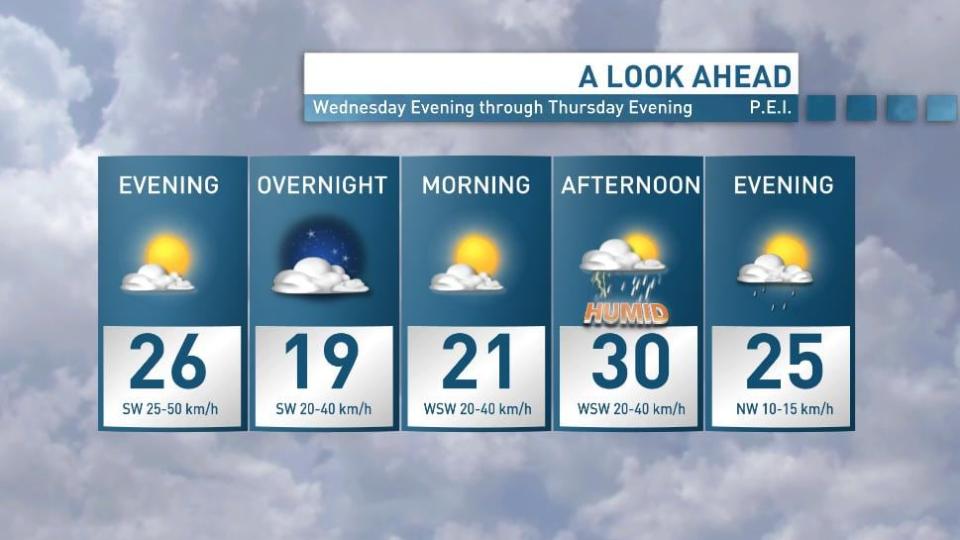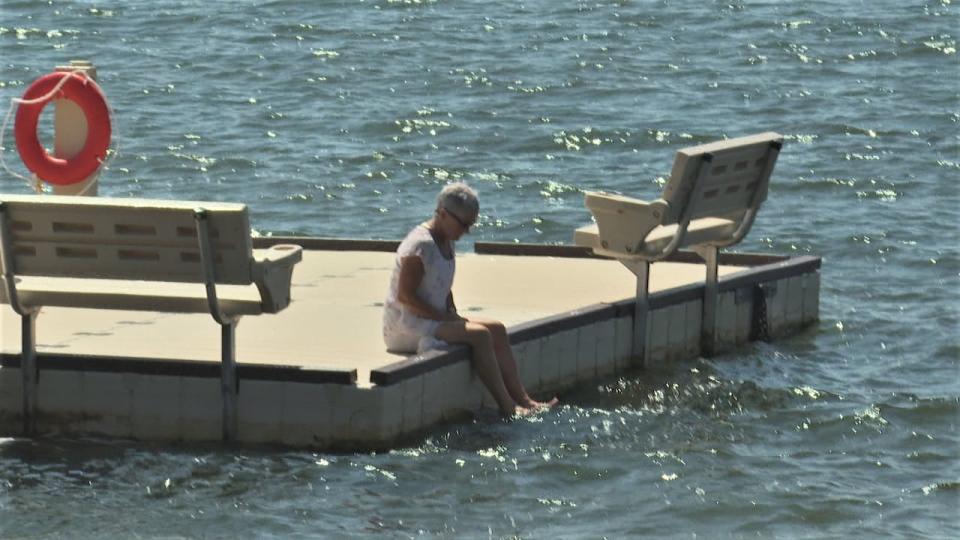Heat wave starting to break records on Prince Edward Island
High-temperature records are starting to fall on Prince Edward Island, as a heat dome settles over Eastern Canada and Environment Canada heat warnings remain in effect for all three of the province's counties.
The temperature at Charlottetown Airport at 4 p.m. AT was 31.4 C, a new daytime high record topping the previous one of 29.5 C set in 2020. In Summerside, the Slemon Park reporting station was reading 28.3 C at the same hour, shy of the 30.1 C record high set in 2020.
"Not only is it hot, but it's very humid as well with humidex values in the high 30s to over 40 for many areas," said CBC meteorologist Jay Scotland.
Scotland is expecting overnight temperatures in the range of 18-23 C, thanks to a warm and brisk southwesterly wind measuring 20 km/h to over 40 km/h.

Environment Canada issues a heat warning when forecast temperatures climb above 28 C and do not fall below 18 C overnight.
Days where the temperature reaches 30 C are unusual on P.E.I., but they are becoming more common. From 1960 to 2010, Charlottetown averaged one day a year that hot. In the last six years, the average has been close to three.
"Thursday is shaping up to be a hot and muggy day as well, and there is even a risk for thunderstorms developing in the mid- to late-afternoon," said Scotland.

The high temperature Thursday will range from 26 to 31 C, he estimated.
That means more daily records could fall on the Island. The highest temperature ever recorded on a June 20 in Charlottetown was 28.3 C, reached both in 1922 and 1923. The daily record for June 20 in Summerside is 29.9 C, set in 2001.
Cooler temperatures will move in by Friday morning.
Policy for hot weather 'makes sense'
Schools will remain open during the heat wave.
In April, the P.E.I. Home and School Federation passed a resolution suggesting the Public Schools Branch should consider closing schools in extreme heat.

Federation president Shannon Bruyneel told CBC News the resolution, which would shut schools when the forecast is for a humidex above 35, was passed without controversy.
"I don't remember any discussion to the contrary, especially given that there are policies in place for extreme cold weather," said Bruyneel.
"The agreement seemed to be, among people discussing the resolution, that it makes sense to have a policy if the weather is very hot as well."
Both Wednesday and Thursday were expected to feel as hot as the low 40s with the humidex.
The resolution is being discussed with the Public Schools Branch and Department of Education, but is still being reviewed.
Climate change is making these discussions necessary, said Bruyneel.
"We need to have these conversations of when it might be too hot," she said.
"If we look at climate trends we can see the number of days that the temperature is going to be hot is increasing."
The Public Schools Branch said it has sent information to teachers reminding them of ways to keep children safe when the weather is hot, including drinking lots of water, minimizing outdoor activity in the heat, and protecting themselves from the sun.
Taking care at work
Anyone working outside, or in a hot indoor environment such as a restaurant kitchen, is at risk during heat waves, said Danny Miller, director of occupational health and safety with the Workers Compensation Board of P.E.I.
"There's heat exhaustion, which is not nice," said Miller.
"The more serious side of heat stress is when you're getting into the area of heat stroke, which is very serious. At that point you really need to seek medical attention."
While employers have responsibilities, it is important for workers to take responsibility for themselves as well, he said. That includes drinking lots of water and taking regular breaks out of the sun or in an air conditioned space if possible. Wear a hat and sunscreen.
"Consider using a buddy system," said Miller.
"So a couple of workers could agree to monitor signs of heat stress with the other person. We get busy in our day and we forget to look after ourselves."
Employers also need to have a plan for keeping workers safe in extreme heat, including establishing safe procedures, and educating workers on the dangers of heat stress and how to prevent it.


